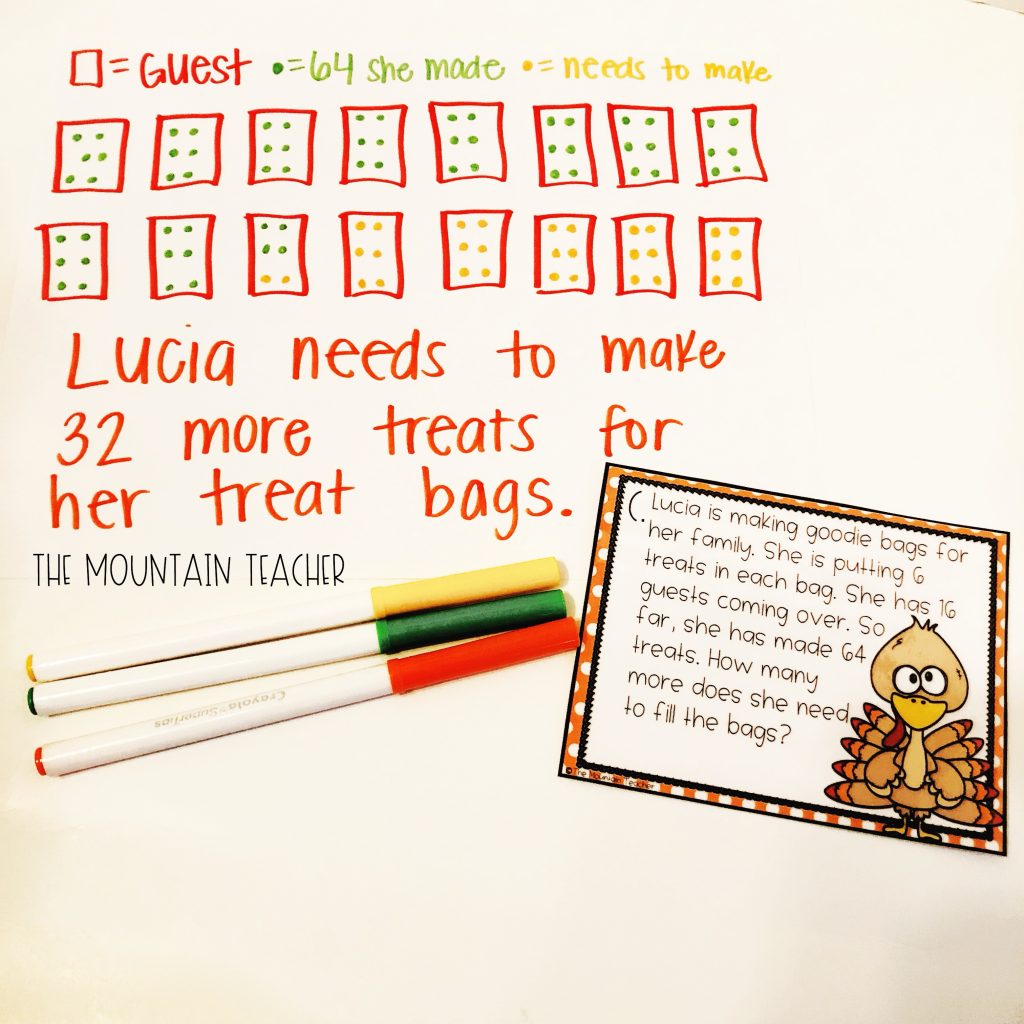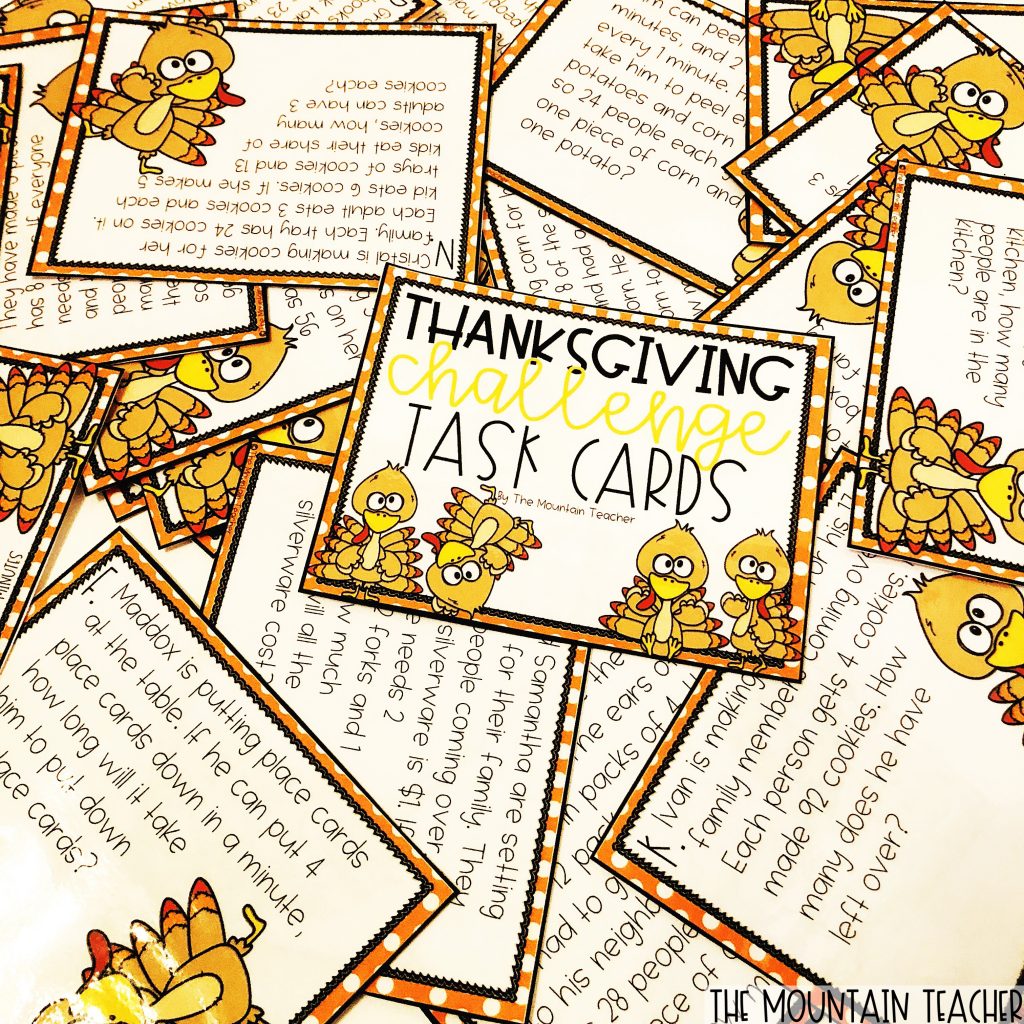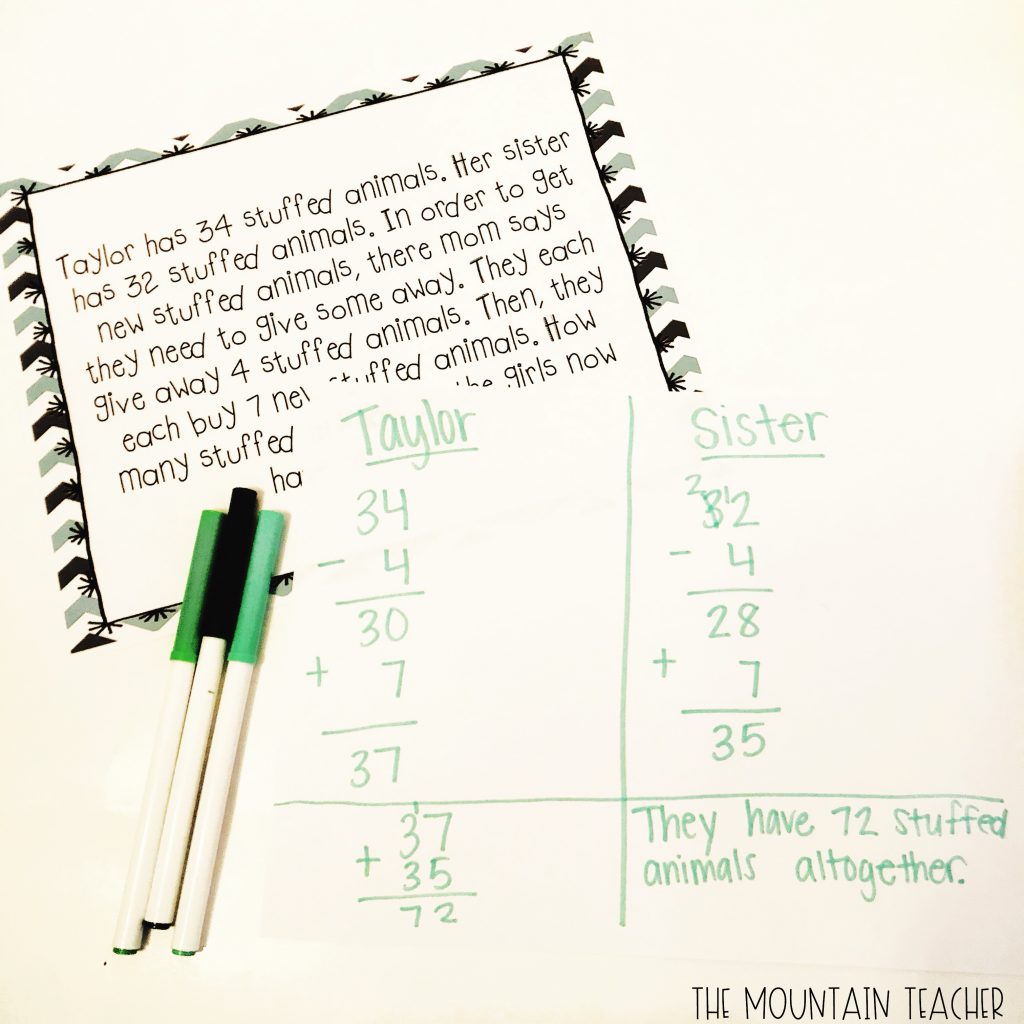Challenge Math for Second Graders

Are you looking for a way to push your higher thinkers or to push all of your students into higher level thinking? Look no further than implementing challenge problems into your classroom. This is a great way to see who can rise to the challenge and to push students that are ready into truly analyzing what a problem is asking them to do. It forces students to come up with an attack-plan when attempting to solve a problem, and has students think critically and out of the box to solve real-life problems that they might encounter.
What?
Finding challenge problems can be a challenge of its own! For me, I like to start with multi-step problems within my own grade level, then switch to harder concepts. This doesn’t mean that you have to teach students how to solve harder concepts, such as dividing or multiplying, but you can still introduce the idea to them and have them solve problems using these concepts by having them use concrete models to show their work. For example, you might have a problem where someone has 45 marbles and makes three piles. Students can easily visually draw 3 piles and divide 45 into 3 even piles of 15 without having formally been taught that 45/3=15. I actually purposefully do NOT show students the equations behind their work, as this would be too shallow for them to understand and might confuse them with the concrete models/equations we DO know and use during class. Our challenge problems are always word problems and are always relatable. If you are looking for good problems to challenge your second or third graders, check out some of my challenge packs listed at the bottom.

When?
This question seems to be at the root of everything we know is important for education… We KNOW what we are talking about is important, but HOW are we supposed to find time to do this in a meaningful way?! Challenge problems are a GREAT thing to implement during math workshops or during independent math time when early finishers are waiting for the rest of the class to catch up. I usually have a daily problem that ALL students are welcome to work on throughout all of our math block, and we go over the various solutions and answer at the end of the math block. My students typically come in and work on four warm up problems, then I add the challenge problem as a possible choice to work on. I also start with the challenge problem as a warm up for my higher achieving students, and use it as a closer for all of my other groups. I try to give as little guidance as I can, and allow students to formulate their own strategies to solve the problem. I let the students work together (if they are TRULY working together) and we always talk about multiple solutions as a “closer” for our math block. The kids love it and are always begging to do more problems.

Who?
When I started implementing challenge problems, I had only started with my highest achievers. However, quickly, ALL of my students started asking to solve the problems. Now, I give EVERYONE an opportunity to work on them. I work more closely with my higher achieving students, just because I have more time to spend on that since we need less time reviewing grade level material. However, I go over the solutions at the end of my math block with ALL of my learners. I find that they all love to rise to the challenge and you would be surprised how excited this can make many of your students about math.

How?
I tell students there are 3 essential parts of their problem that must be shown in order for their solution to be correct: 1. their work, 2. their numerical answer, 3. the label/word to what they found. I will also have my students write about how they found their answers as an extension activity. They always talk about their solutions as well – we either share out as a whole class, in groups or with partners. This is a great way for them to build their toolbox with different strategies that they can try the next time.

Looking for Resources?
If you teach second or third grade, I am in the midst of releasing monthly themed challenge problems that you can check out below! Otherwise, I would look on TpT for one or two grade levels above the grade your students are in. I’d be cautious on this to make sure the problems are different enough that you are not just practicing the same skill each day. Part of the “challenge” is being able to figure out what the question is asking, so be sure that you are practicing something different each day/week.
Click the Image Below to Check Out the Resource on TPT:
Do you have experience teaching this with elementary students? More questions? Drop it all in the comments below!




